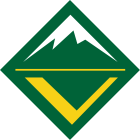Venturing (Boy Scouts of America)
| Venturing | |||
|---|---|---|---|
 | |||
| Owner | Boy Scouts of America | ||
| Age range | 14 through 21 years[1] | ||
| Country | United States | ||
| Founded | February 9, 1998 | ||
| Membership |
| ||
| President | Pratik Vaidya | ||
| |||
|
Website BSA Venturing | |||

   Standard uniform colors for Venturing | |||
Venturing is part of the program of the Boy Scouts of America for young men and women. Members must be at least 14 years old, or 13 years old and have completed eighth grade, through age 21.[1]
The purpose of Venturing is to provide positive experiences to help youth mature and to prepare them to become responsible adults.
History
The Venturing program has a long history within the BSA. The program got its start in the 1930s as the "Senior Scout" Division for boys 15 and older. The Senior Scout programs included the Sea Scouts, Air Scouts, Explorer Scouts, Rover Scouts, and a few others. Explorer Scouts focused on advanced camping and worked on advancement leading to the Ranger Award. Sea Scouts and Air Scouts were nautical and aviation-focused programs, respectively.[3]
In 1949 the Senior Scout Division became the Explorer Division. Sea Scouts became Sea Explorers, Air Scouts became Air Explorers, and Explorer Scouts simply Explorers. The Explorer program became less of an advanced outdoor program and more a broader program for young men, with the minimum age lowered to 14 years old. Explorers got a new advancement program leading to the Silver Award.
Explorer advancement was dropped in 1959. The Air Explorer program was eliminated in 1964 and the Sea Explorer program had changes made. The program was further changed to be more appealing to older youth, with career exploration becoming a bigger part of the program.
The BSA allowed young women ages 14–20 to join special-interest Explorer posts beginning in 1969. Many posts became co-ed. The focus on career exploration was increased and, as the years progressed, Exploring focused more on career exploration posts, though outdoor and sports-oriented Posts continued to thrive.
Posts that primarily consisted of seminars at high school with guest speakers were designated as Career Awareness Explorer posts in the early 1980s. This was the fastest growing segment of Exploring and the BSA during the 1980s. These posts were realigned into the new Learning for Life subsidiary in 1991, and the posts were then designated as High School Career Awareness groups and the youth were no longer considered to be Explorers.
The Exploring program was reorganized and split into two program categories in 1998. All the career-oriented posts were moved to Learning for Life under the name Exploring, while the rest (including outdoor-oriented posts) became the new Venturing program. Sea Exploring was renamed Sea Scouting and placed under the Venturing program. In February 2016, Sea Scouting became a separate program division.
Organization
The Venturing crew is sponsored by a community organization such as a business, service organization, school, labor group, or church. The chartered organization is responsible for selecting leadership, providing a meeting place, and promoting a good program. The chartered organization representative is the liaison between the crew, the chartered organization, and the BSA. The crew may elect to be all-male, all-female, or co-ed.
The crew committee is a group of adults, led by the crew committee chair, who guide the crew program and activities and manage record keeping, finance, leadership recruitment, and registration. The crew must have at least five adults registered with the crew to become a legitimate crew. The crew is led by youths who are elected to the positions of president, one or more vice-presidents, secretary, treasurer, quartermaster, guide, and historian.[4] Other positions in the Venturing crew may exist, such as activity chair. The adult adviser and associate advisers provide guidance while allowing the youth to lead the crew.
Venturing Officer's Association
At the Council, Area, Regional, and National level Venturing is led by youth organized into Venturing officer's Associations.[5] The National VOA, previously known as the National Venturing Cabinet, are the youth leaders of the Venturing program. These youth are the National Venturing President, the National Venturing Vice President, and the four regional Venturing presidents.
Uniform

"The recommended uniform [for Venturers] is the spruce green Venturing shirt with green epaulette tabs and gray backpacking style shorts or gray casual pants. However, the uniform, if any, is the choice of the crew."[6] Some sources also indicate that while the uniform is their choice, Venturing youth "should not wear the Boy Scout tan shirt with green shoulder loops."[6][7][8]
Official Venturing uniform pieces available from the National Supply Division include a spruce green button-up shirt or blouse with a pointed collar, two front button-flap pockets, shoulder epaulets with shoulder loops, short sleeves, and a US flag attached to the right shoulder and a Venturing - BSA strip above the right pocket. The other components are charcoal gray trousers or shorts, gray socks and a gray web belt with brass buckle (currently being phased out in favor of a newer black webbed belt and "rolled claw" black metal buckle similar to the forest green belt introduced in 2008 for the Centennial Scouting Uniform). The gray cap and the gray brimmed hat with Venturing logo are also available for use by Venturing crews. Venturers who wear the official Venturing shirt or blouse should wear the proper insignia as outlined in the Insignia Guide. Either the official Venturing emblem or an approved crew specialty patch may be worn on the right sleeve.[6][8] Green shoulder loops identify Venturers at the crew level. Adults or youth with a district or council position wear silver loops while those with area, regional or national positions wear gold loops. The shirttail is tucked in.
Recognition
Youth recognition
A new series of awards were introduced on June 1, 2014. The Venturing Award is a joining award, requiring Personal Safety Awareness training and an induction ceremony.
- The Discovery Award requires participating in adventures, CPR and first aid training, completing the Leadership Skills for Crews course, the Goal-Setting and Time Management training courses and the Crew Officers Orientation, setting and achieving a personal goal, participating in service activities and completing an Advisor conference and a crew board of review.
- The Pathfinder Award requires participating and leading adventures, Project Management training, giving leadership to advanced adventures, serving as a leader in the crew or serving on staff for leadership training, setting and achieving personal goals, leading a crew project, participating in service activities and completing an Advisor conference and a crew board of review.
- The Summit Award requires participating and leading adventures, completing Mentoring training, mentoring an activity, serving as a leader in the crew or serving on staff for leadership training or leading Introduction to Leadership Skills for Crews, completing a personal reflection, creating a personal code of conduct, leading an ethical controversy and conflict resolution scenario, planning and conducting a service project and completing an Advisor conference and a crew board of review.
Venturers may also earn expert awards: the Ranger Award for outdoors,[9] the TRUST Award for religious and community life,[10] and the Quest Award for sports.[11]
Venturing youth are eligible for the Venturing Leadership Award.[12] There are four levels of these awards: council (for those at the crew, district, and/or council levels), area (for those at the area level), region (for those at the region level) and National. A limited number of these awards are presented on an annual basis to those involved in Venturing who have made exceptional contributions to Venturing at their particular level and who exemplify the Venturing Code.
There are other awards, such as the Venturing Shooting Sports Outstanding Achievement Award[13] and the Venturing World Conservation Award. Venturers may also earn other awards common to the Scouting program such as the William T. Hornaday Awards. Venturers may also be recognized for their "excellent achievements and service to their community, state and nation" with the Young American Award.[14]
Male members under the age of 18 may also earn the Star, Life, and Eagle Scout ranks from the Boy Scouting program if they have earned at least First Class rank in a Boy Scout troop or Varsity Scout team.
Adult leader recognition
Venturing adult leaders who complete training, tenure, and performance requirements are recognized by a system of awards. The Venturing Leader's Training Award[15] is available to any leader, while the Venturing Advisor's Key[16] and Venturing Advisor Award of Merit[17] are only available to the Advisor.
Service recognition
The Venturing Leadership Award was briefly unavailable to adults from 2012 - 2015. It is again a recognition for Venturers and advisors who exemplify living by the values of the Scout Oath and Law in service to other people and to the movement.[18]
The Venturing Bronze awards for Arts and Hobbies, Outdoor, Sea Scouts, Sports and Religious Life were introduced with the new Venturing program in 1998 along with the Gold Award and the Silver Award. They were discontinued on December 31, 2014.
Girl Scouts
Girl Scouts who have earned the Gold Award may wear the award on the Venturing uniform.
Program and activities
Generally, each crew will select a specialty that determines the program and activities. An outdoor focused crew will do a lot of camping, while a religious life crew will probably be involved in church activities and community service projects. Crews are encouraged to have an annual Super Activity, which is typically a week-long event, usually during the summer. Crews within a district, council or area may jointly perform activities that promote advancement through fun and competition.
The Venturing Safe Rides program provides a free and confidential safe ride home to any young adult who is not in a condition to drive safely, or who wants to avoid being a passenger in such a situation.
Training
New leaders are encouraged to attend training for their position. This training provides the essential information they need to provide a safe and high-quality program.
Youth training
Youth training in Venturing consists of a Crew Officer Briefing conducted by the Crew Advisor.[1]
The first step of leadership training in Venturing is the Introduction to Leadership Skills for Crews (ILSC) program, which replaced Venturing Leadership Skills course. This course is designed to teach crew leaders about their new roles and how to perform them. It is intended to help Venturers in leadership positions understand their responsibilities and to equip them with organizational and leadership skills. This program is the first course in the series of leadership training offered to Venturers. When youth leaders complete this program they are eligible to attend the National Youth Leadership Training in their local council and the National Advanced Youth Leadership Experience at Philmont.
ILSC is also required for Kodiak. Kodiak is a week-long or two weekend-long, outdoor trek-based training course where Venturers are given five leadership commissions. This program is conducted by the local Boy Scout council.
The final step of youth leadership training in Venturing is Kodiak X. Kodiak X adds two more commissions to those youth learned in Kodiak and allows the youth to put their skills to the test through different challenges. Kodiak is required for this course. Kodiak X is a one weekend-long course and must be conducted at a Council level.
Adult training
Venturing Fast Start is the introduction for adult leaders new to the Venturing program. Fast Start is self paced and provided as a video or online. Venturing Youth Protection Training is required for all adult leaders. Re-certification is required every two years.[19]
Basic Leader Training consists of This is Scouting and Venturing Leader Specific Training. This is Scouting is a common core program for all adult leaders in the BSA. Venturing Leader Specific Training gives the Advisor or Associate Advisor the needed knowledge and skills. Once Basic Leader Training is completed the leader is awarded a Trained emblem for uniform wear.
Powder Horn is designed to introduce Venturing and Boy Scout leaders to the activities and resources needed to operate an outdoor and high-adventure program and is based on the Venturing Ranger program.
Supplemental training modules are designed to provide orientation beyond Basic Leader Training. These training sessions are often provided at the Roundtable (a monthly meeting of leaders), at University of Scouting programs offered by the local council and at National Scouting Conferences held at Philmont Scout Ranch, and the Florida National High Adventure Sea Base.
Wood Badge is the advanced training program for leadership skills for all adults in all BSA programs. Wood Badge consists of six days of training, usually presented as two three-day weekends, and an application phase lasting no more than 18 months. When training is complete leaders are recognized with the Wood Badge beads, neckerchief, and woggle.
References
- 1 2 3 Boy Scouts of America Youth Application (PDF). Boy Scouts of America. #524-406A.
Venturers and Sea Scouts registered in a crew or ship prior to their 21st birthday may continue as members after their 21st birthday until the crew or ship recharters or until they reach their 22nd birthday, whichever comes first.
- ↑ "Overview of Boy Scouts of America". Boy Scouts of America. 2013.
- ↑ Brown, Michael. "A History of Senior Scouting Programs of the BSA".
- ↑ "Three New Positions Are Added To Venturing Crew Leadership" (PDF). National Venturing Youth Cabinet.
- ↑ "VENTURING - SOPs" (PDF). Boy Scouts of America. Boy Scouts of America. Retrieved 16 March 2016.
- 1 2 3 Venturer Handbook. 2005. p. 6. #33494B.
- ↑ Venturer Handbook. 2005. p. 93. #33494B.
- 1 2 Brown, Michael R. (August 11, 2006). "Venturing Uniforming Frequently Asked Questions (FAQ)". U.S. Scouting Service Project. Retrieved December 3, 2006.
- ↑ "Venturing Ranger Award". Boy Scouts of America. Retrieved April 20, 2006.
- ↑ "Venturing Trust Award". Boy Scouts of America. Retrieved April 20, 2006.
- ↑ "Venturing Quest Award". Boy Scouts of America. Retrieved April 20, 2006.
- ↑ "Venturing Leadership Award". Boy scouts of America. Retrieved March 30, 2006.
- ↑ "Shooting Sports Outstanding Achievement Award". Boy Scouts of America. Retrieved March 30, 2006.
- ↑ "Young American Award". Boy Scouts of America. Retrieved March 30, 2006.
- ↑ "Venturing Leader's Training Award". U.S. Scouts Service Project. Retrieved June 9, 2011.
- ↑ "Venturing Advisor's Key". U.S. Scouts Service Project. Retrieved March 30, 2006.
- ↑ "Venturing Advisor Award of Merit". U.S. Scouts Service Project. Retrieved March 30, 2006.
- ↑ "Youth-Only Venturing Leadership Award Qualifications". Scoutwire. Retrieved October 26, 2011.
- ↑ "Youth Protection Training". Boy Scouts of America. Boy Scouts of America.